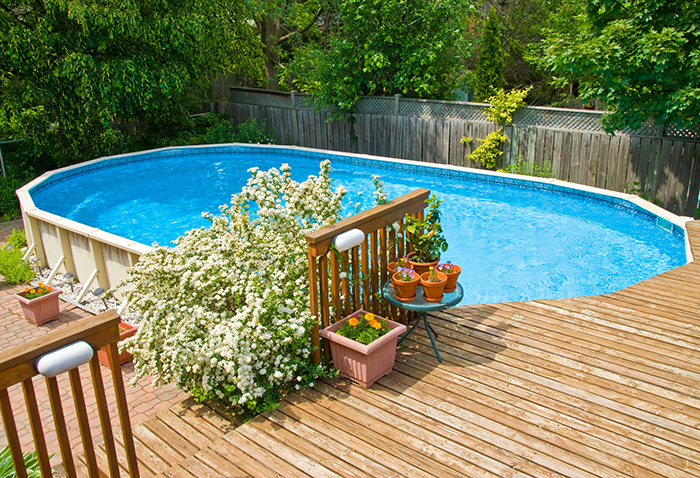How to install, maintain and close an above-ground pool
Want to put a pool in on your property? Here’s a quick look at how to install, maintain and close an above-ground pool.

Installation
First, decide where you want to put your pool. If possible, choose an area that gets a lot of sun with enough space for people to walk around it. Make sure it’s not too close to the edge of your yard. Think about where fences and other safety features will go and check the safety standards you have to follow.
Next, remove the grass and any roots, and level the ground. Some pools need to have a downward slope toward the centre or other specific requirements. Ask your supplier before purchasing.
On installation day, build the bottom ring and base, assemble the pool walls and structure, install the liner, and lastly, install the filtration system and accessories (water heater, ladder, etc.).
Be sure to follow the manufacturer’s instructions during assembly. Take your time and ensure that all the pieces fit together and that the liner doesn’t get damaged.
If you don’t feel comfortable installing it yourself, hire a specialist. The store where you buy your pool may even offer this service, but it won’t come free!
Maintenance
A few simple things can help keep your pool clean. Ask your local pool shop for advice on which water treatment is best (chlorine, saltwater, ozone or ionization) and how to do it properly. Make sure the water level is sufficient for the pool pump to work effectively. Check the water pH, remove debris with a hand skimmer, empty skimmer baskets and vacuum the bottom of the pool regularly (at least once a week).
Closing
You can hire a professional to show you how to close your pool for winter. Once you know how, you can do it yourself worry-free. Here’s a quick to-do list for closing an above-ground pool.
- Remove the ladder, steps, thermometer, lights, solar cover and any other accessories.
- Use a specialized cleaner to clean the part of the cover that is not in contact with the water.
- Check for leaks and repair any you find.
- Do one last round of water maintenance.
- Remove all leaves and debris.
- Clean the filter according to the manufacturer’s instructions. You’ll probably do a backwash and rinse.
- Drain the water. There should be about 18–20 inches between the water and the skimmer. Always check the manufacturer’s recommendations. You can put a winter cover on to protect your pool.
- Store equipment or make sure it is adequately covered for the colder months. Put everything—even small pieces—in clearly marked bins. This will make your job much easier when it’s time to reopen your pool next summer!
Are you passionate about real estate? Subscribe to the Centris.ca newsletter now.
See also:
A Safe Residential Pool: Understanding Your Obligations
Waterfront or access to waterfront: Understanding the difference
Trees and Shrubs for Small Yards
 The Largest Number of Homes for Sale
The Largest Number of Homes for Sale



